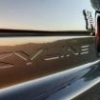Egr Performance Upgrade?
Announcements
-
Similar Content
-
Latest Posts
-
Yeah, this is one of the most annoying things about nissan part numbers... I've got an unrelated example... Image is of the AT output shaft ~ they have the same part#, but clearly the shaft on the left is beefier design to that on the right ...the difference (essentially) is the 'lighter' shaft on the right, is for engines up to RB25DE (this includes RB20 variants) : the shaft on the left is for RB25/26DET(T)....are they interchangeable? Yes...but obviously one shaft is going to be stronger than the other...and, the lighter shaft is around USD115, but the heavier shaft closer to USD150...same part#... ...epc-data usually tells a tale ~ the amayama listing for 39100-23U60 has a note "Longest side is between 60 and 105 cm" ; no such info is there for 39100-23U70 ...and given the great disparity in price between the 2 parts, it makes me at least curious (to the point of caution) where the 'extra money' went? ...ie; these 2 parts have a cost difference that (to myself at least) isn't explained by 'plastic boot'...ie; with amayama there's AUD700 price difference ...plastic versus rubber?...I'm not seeing it like that...and 60cm ~ 105cm...??...that's a huge disparity....something hinky going on here... I'd try searching by VIN, not model... /2cents
-
I don't know for sure, but I'd expect them all to be interchangeable given the diff end and hub end don't move/change between any C34 series. Often Nissan will change part numbers and the aftermarket follows those year ranges; but the original part number change doesn't mean other parts won't fit. The change could be a change in material, internal parts or even just supplier. For example, all the RB gearbox to engine bolts are no longer available and there is a new part number instead. The only change is they went from cadmium plated bolts to zinc plated due to the issues manufacturing with Cadmium. They look different but work the same.
-
By soviet_merlin · Posted
One year is a bit concerning. Did you try contacting GSP? It says 5 year warranty on the box if I remember correctly. I'm also running their driveshafts on my S2 Stagea. You could check the part numbers on Amayama for your year. Here's the link for my 1998 which gives the 39100-23U60 part number. Well, that and 39100-23U70. https://www.amayama.com/en/genuine-catalogs/epc/nissan-japan/stagea/wgnc34/6649-rb25det/trans/391 What does it say for yours? -
I ordered a GSP Front R/H Axle from here - https://justjap.com/products/gsp-premium-front-driveshaft-r-h-nissan-r32-r33-r34-skyline-gtr-stagea-4wd#description It lasted around a year before one of the boots blew out. I'm lowered, but I have GKTech roll center adjusters. One year seems a little premature. I think I'm going to spend the extra money on an OEM cv axle this time. This website - https://tfaspeed.com/collections/nissan-stagea-wgnc34-x-four-parts/products/nissan-stagea-awc34-260rs-rb26-right-front-axle-drive-assembly Makes it sound like the readily available OEM CV axle will only fit 11.1999 Stagea and up (mine is a 2.1997 S1). The JustJap listing didn't mention any years or anything for the GSP axle. Amayama shows '11.1999' and up as well for that part number. As well as 'plastic boot type'. See attached picture. So I guess my question is, does that axle (39100-23U60) really only fit S2 Stagea? It's the front driver side. If it does, I'd love to buy that instead of rolling the dice on another GSP. I've found that OEM one cheaper here: https://www.partsfornissans.com/oem-parts/nismo-jdm-r32-r33-r34-skyline-gtr-r32-gts4-right-front-axle-3910023u60 and here https://www.nissanparts.cc/oem-parts/nismo-shaft-ft-drive-3910023u60 Just a little confused because the JapSpeed listing for the GSP front driver axle doesn't mention any specific years or anything and it fit my S1 Stagea fine. So will 39100-23U60 fit my S1 Stagea even though technically it says '11.1999' and up? What would have changed? Thanks.
-
By TurboTapin · Posted
Thanks for the info. The only "Issue" I've had with the shifter is I always found the throw between 4th and 6th gear too close. I'm always worried to shift into 4th accidently and sending my motor to the moon. Adam LZ recently came out with a video and stated Serialnine revised their shifters to correct this and will change all the revised parts for 150$. Strangely enough, I contacted Serialnine right after and they denied it and said it's bullshit. I found that strange as he's a distributer. I'll keep this forum post updated on that saga.
-







Recommended Posts
Create an account or sign in to comment
You need to be a member in order to leave a comment
Create an account
Sign up for a new account in our community. It's easy!
Register a new accountSign in
Already have an account? Sign in here.
Sign In Now